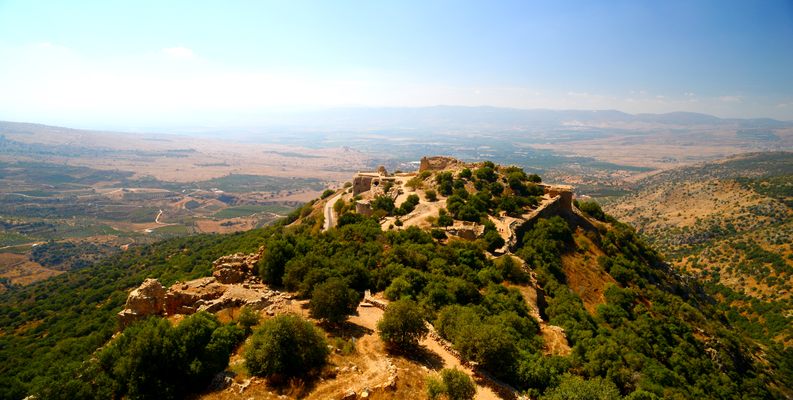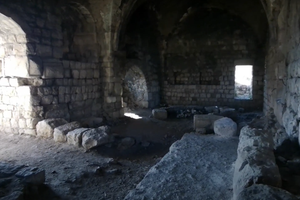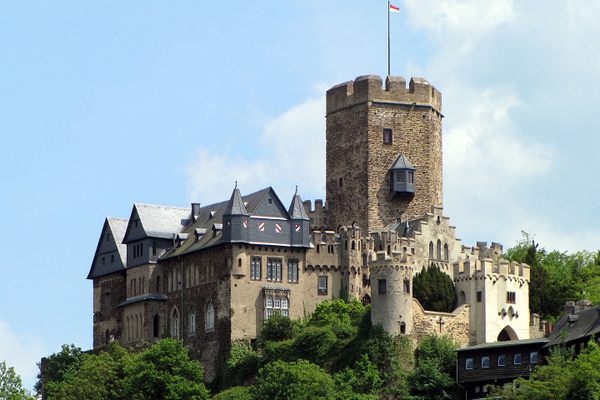About
A fortified structure in the foothills of Mount Hermon, Nimrod Fortress is a physical reminder of the Crusades. The castle is named for the biblical hunter Nimrod who, according to local legend, made his home on this summit in northern Golan.
During the Crusades, the Levant—a region in the Eastern Mediterranean—was getting crowded with castles, built mainly by Crusaders desperate to hold their territory against the formidable armies of Saladin. By 1192, the Third Crusade had seen significant success in taking territory around Israel and a year later, Saladin died. Saladin’s nephew Al-Aziz Othman filled the vacuum left in the region, and built himself a massive castle on a cliff in the Golan Heights to protect the loftiest reaches of the Holy Land.
The Crusaders didn’t stay away for long, and the fortress was rush-ordered—it was built between 1227 and 1230—in anticipation of the return of Christian forces under Frederick II, the Holy Roman Emperor. The fortress withstood the Frankish attacks, as well as later attacks under King Louis IX of France, but in time, Ayyubid control slipped and control of the fortress shifted briefly to the Mongols before settling on the Mamluks. Under the Mamluk Sultan Baibars—one of the most undersung characters in the Crusades, considering his outsize role in the region—the fortress was expanded. Today, Arabic inscriptions praising Baibars remain on the site, as well as a large stone carved with his sigil, the Lion of Baibars.
Nimrod Fortress is the largest castle from the Middle Ages remaining in the region. The Siege of Acre in 1291 pushed out the last of the Crusaders, and the fortress remained derelict for several centuries.
Nimrod’s strategic value is unmissable, and following the Crusades, the fortress was used by the Ottomans, the French (who were occupying the land, and suppressing revolts by local Arabs and Druze), and the Syrian army during the Six Day War. Today, the castle is under the control of Israel’s national park service, but being so far North, is off the beaten path of most tourists. It is most regularly populated by a smattering of rock hyrax—rodent-looking relatives of the elephant, who take to the fallen Crusader masonry as if they were rocks.
Related Tags
Know Before You Go
The castle is most accessible by car, but can also be accessed by rail and bus (if both, by transferring at Kiryat Shmona). Around the fortress are a number of Druze villages, and just a few miles west there are remarkable ruins of a Greek temple at Hermon Spring. It takes about an hour and a half to fully walk through the castle grounds, which stretches along the crest of one of Hermon’s foothills.
In the summer, Nimrod Fortress National Park is open Sunday through Thursday and Saturday from 8 a.m. to 5 p.m. In the winter, it is open Sunday through Thursday and Saturday from 8 a.m. to 4 p.m. The castle closes an hour earlier on Fridays and holiday eves. Entrance to the park closes one hour before closing time. Tickets are ₪22 for adults and ₪9 for children.
Community Contributors
Added By
Published
January 30, 2020








































